Analyzing the competitive landscape of the DTC mattress industry

The mattress industry has never been the most exciting sector. After all, consumers only need a new one every 7-10 years. It’s an industry born out of necessity and practicality – or so, we thought. A boom of new direct to consumer mattress brands, offering easy online browsing and free delivery, has disrupted the old-school mattress showrooms we’ve come to know and wander round.
With colorful branding, cool names and relatable messaging, it’s obvious that these new DTC brands have decided to communicate differently with mattress buyers – but just how differently?
As an example of competitor analysis, we used Relative Insight’s text analytics platform to compare website copy from DTC brands Casper, Leesa and Nectar against more traditional names like Sealy, Serta, Sleep Number and Tempurpedic. See what competitive insights we discovered.
All for one, one for all
The startup brands presented a united front to customers, using the words we and we’re significantly more than traditional brands. They also utilized the word team infinitely more, creating an image of solidarity while personifying the brand.
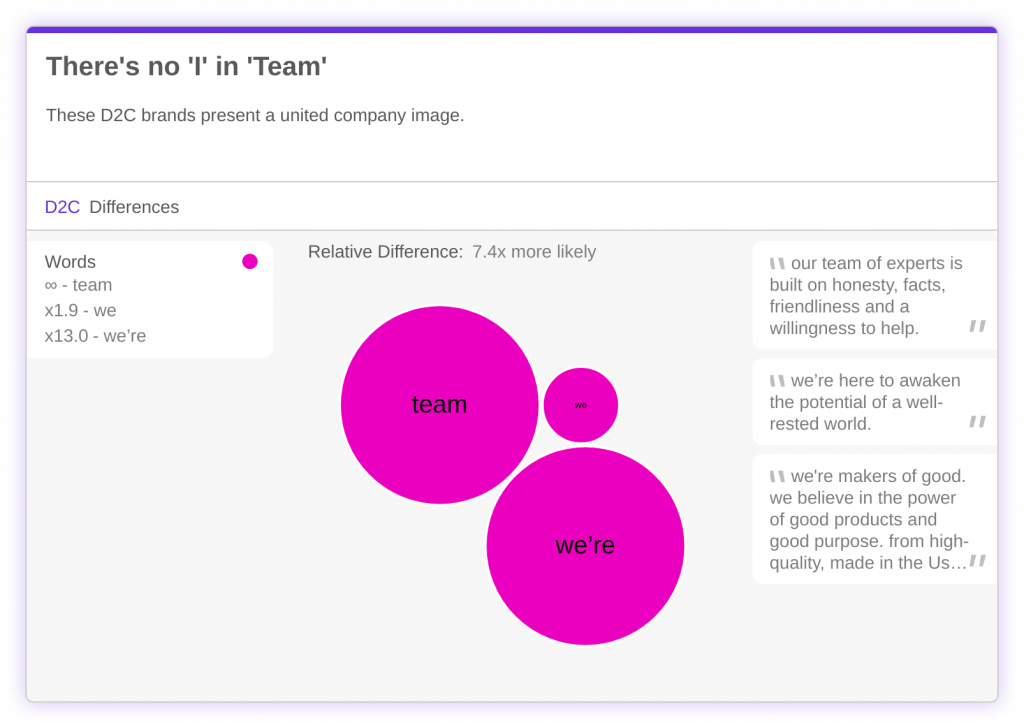

The best of the best
DTC brands Casper, Leesa and Nectar were more likely to use superlative adjectives like best and perfect. In an industry now teeming with competition, the new guys see the need to be on top – or at least, appear so.
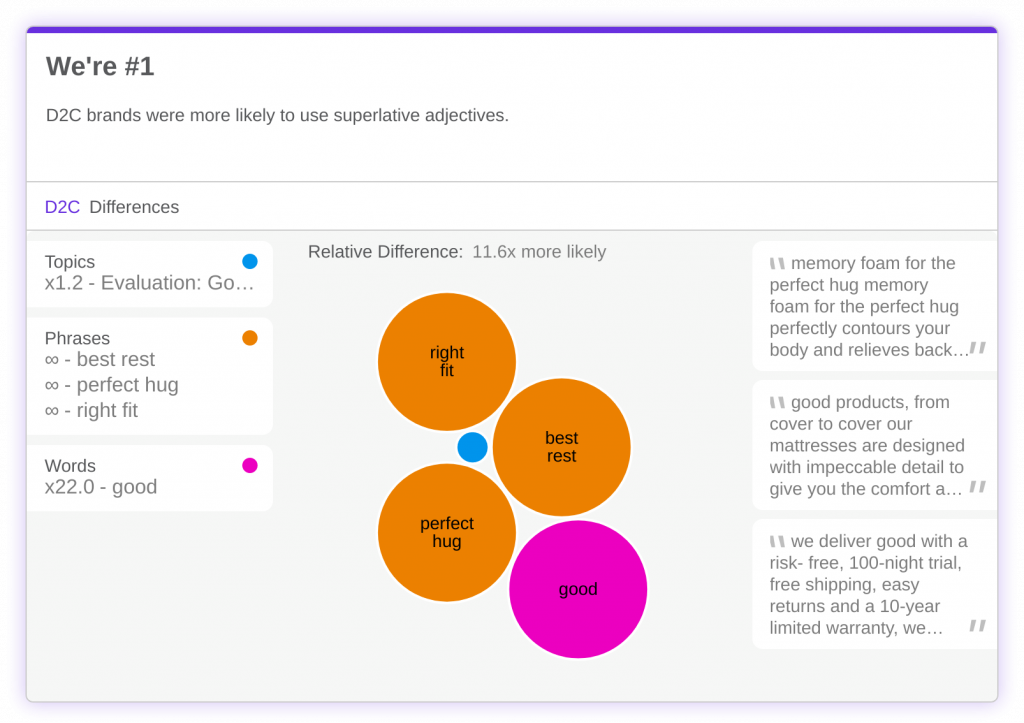

See ya later, soreness
Nothing is worse than getting your eight hours only to wake up with an aching back or stiff neck. Our startup brands know your pain. They went beyond flattering product descriptions, and instead provided physical reasons about why a night on a Casper or Leesa will be better than the rest. This focus on the health benefits of a good mattress was not seen at all from any of the traditional brands.


Product descriptions
Both traditional and direct to consumer brands highlighted the technical specs of their mattress models in product descriptions, but they used widely different language to do so.
Traditional brands favored proper names and trademarked titles for their specific product lines or mattress models. These companies spent a lot of time plugging their own patented mattress technologies like Sealy’s Ultra-Stretch ComfortLoft™ Cover with MoistureProtect™ or Serta’s Cool Twist® Gel Memory Foam, BestEdge® Foam Encasement and HyperTouch™ Comfort, but I bet you just skimmed over all that.
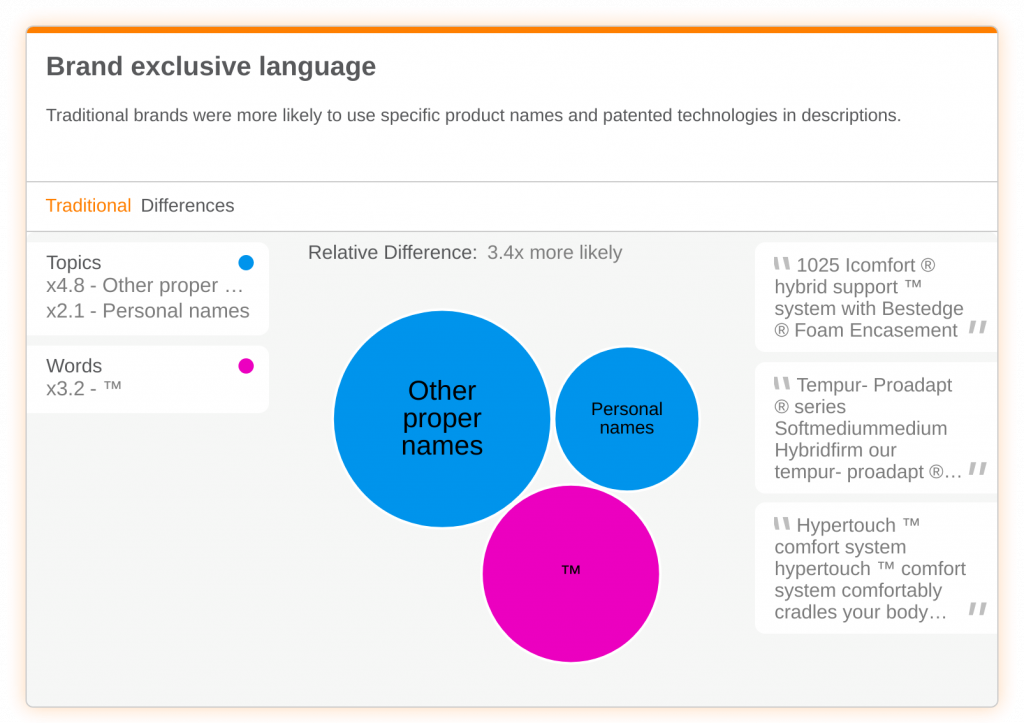

DTC brands also emphasized product features, but instead used descriptive words as opposed to patented names. A key competitive insight was that they were more likely to use accessible phrases like ergonomic and breathable foam, with no ™ to be seen.
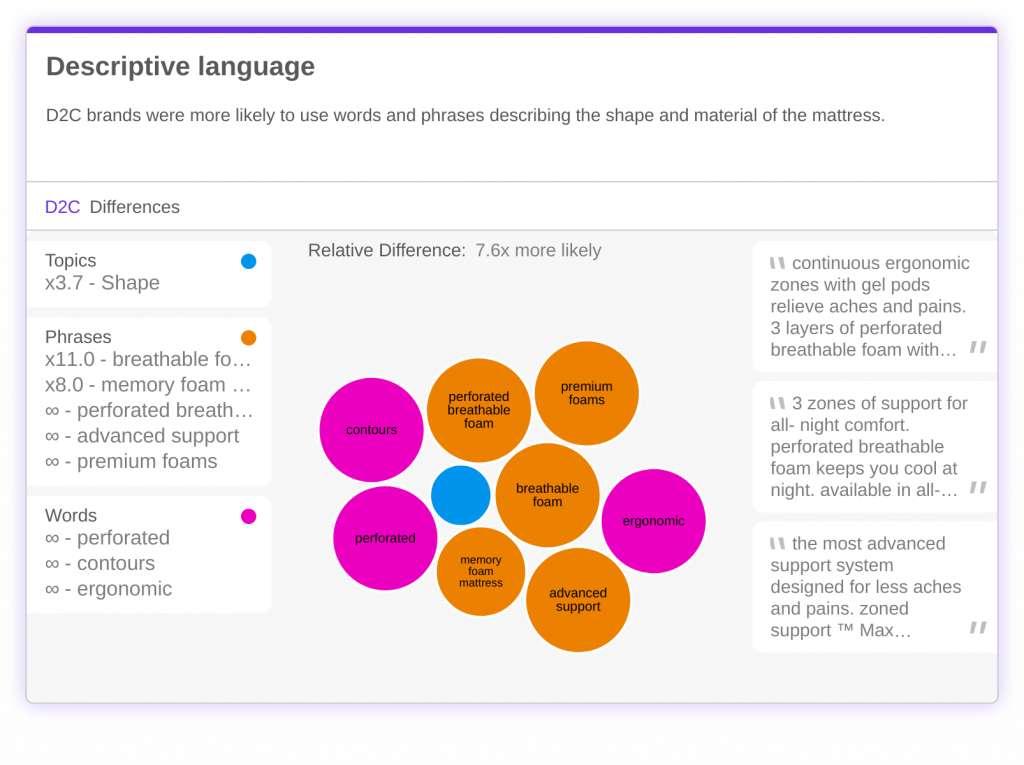

Please tag us!
Perhaps in an attempt to stay current in a newly-changing market, the traditional mattress brands all pushed unique hashtags like #SmarterSleep and #CocoonBySealy. While both DTC and traditional brands highlighted social media posts by customers, only the latter incorporated hashtags in their pleas for social media inclusion.
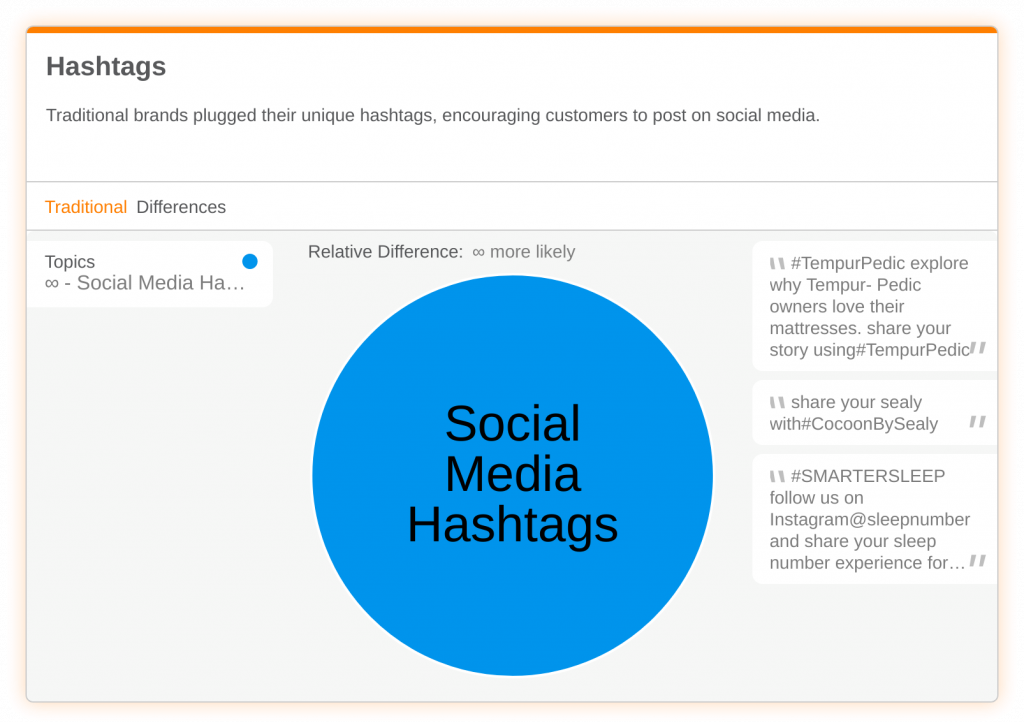

Don’t miss our next Spotlight Series webinar ‘Giant Killers’: The Tale of Challenger Brands on Oct. 27 to hear about more industry-disrupting innovators and unique ways to uncover competitive insights.
Relative Insight can analyze data from any language asset. From social media to webcopy to review data to survey results – the possibilities are endless!

